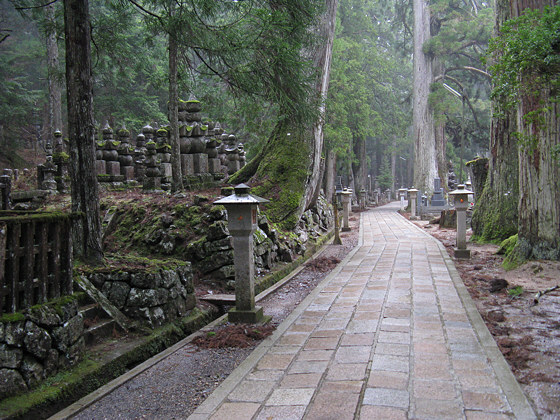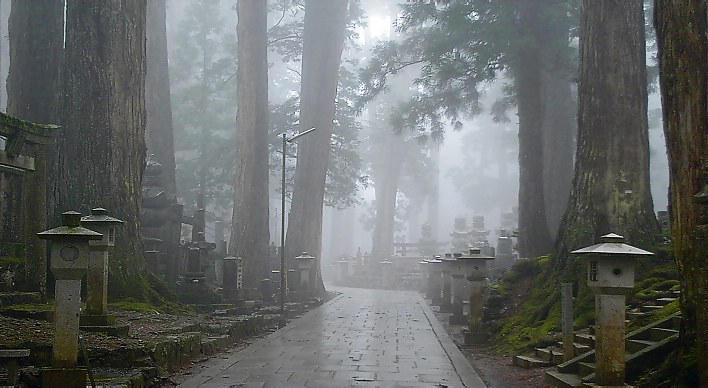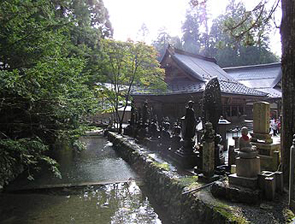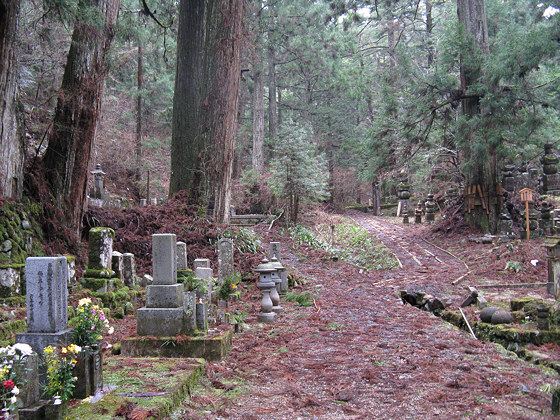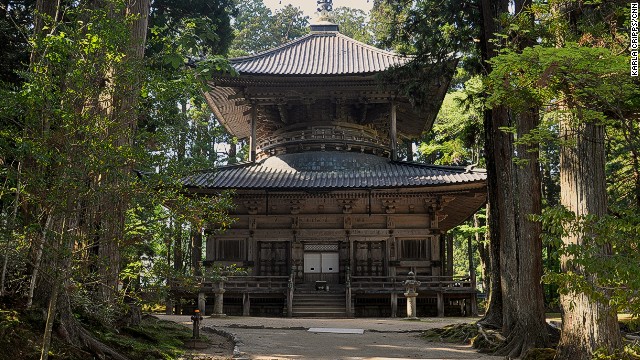Mount KÅya
The area was developed in the year 819 by the monk Kūkai and is the most important place of the Shingon direction of Japanese Buddhism. During his lifetime, Kukai's only a few buildings were constructed. Triggered lightning fires destroyed 994 large parts of the plant. In the meantime, there was hardly any monks in his time are difficult to access region. But after influential people dedicated towards the end of the Heian period in the reconstruction, there has been a significant upturn. Over the centuries, originated with the Kongōbu Temple ( before 1869 Seigan temple called ) in the center of a remarkable temple complex.
Even today, there are 117 temples with around 600 monks and a university founded in 1926 for religious studies. About half of the temple offers pilgrims and tourists accommodation with vegetarian monk cuisine and the opportunity to attend the morning ceremony. Administratively, the temples are part of the town Kōya ( Kōya -chō, population, including monks 3500 people), which has evolved with the economic operation of the Temple, the devotional and the supply of visitors, but since the 90s, suffers from severe population decline.
On the Kōya -san is a series of famous sites:
- Kongōbu -ji (金刚峰 寺, literally " Diamond Peak Temple " ), in addition to the " Eastern Temple" ( Tō -ji) in Kyoto is the most important temple of the Shingon school;
- Danjōgaran (坛 上 伽蓝), an area with a number of pagodas and halls, many of them registered as cultural heritage;
- Compon Daitō (根本 大 塔, lit "Basic Great Pagoda" ), a Pagoda, the center of a three-dimensional mandala forms according to the teachings of Shingon Buddhism, which includes all of Japan;
- Oku -no- in (奥の院, literally "Rear hall "), a small plant with the mausoleum of Kūkai in the back of a lying in the forest necropolis with the tombs of famous personalities and families of Japanese history;
In 2004 Kōya -san was declared along with other sites on the Kii Peninsula by the UNESCO site of world heritage.
The Kōya -san is easily accessible by trains of the Nankai Electric Railway from Namba Station in Osaka from. The cruise ends at Gokurakubashi station (极 楽 桥, literally "Paradise Bridge") at the end of the north Kōya -san situated high valley. A funicular transports visitors in five minutes to the mountain station. From here it is again about ten minutes by taxi or bus into the core part of the settlement. Using the high speed the entire trip takes about one and a half hours.

